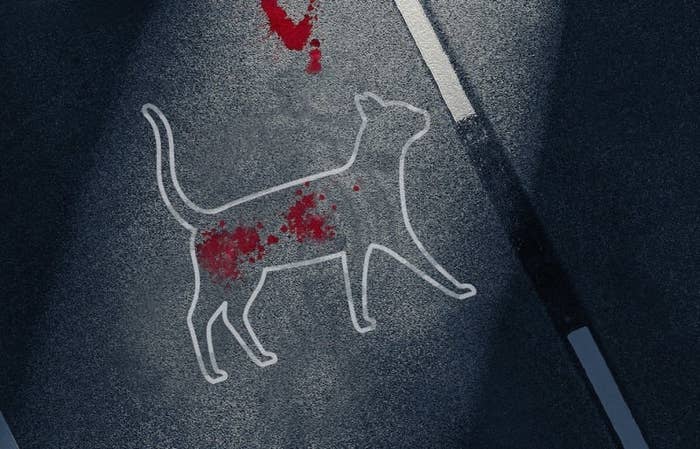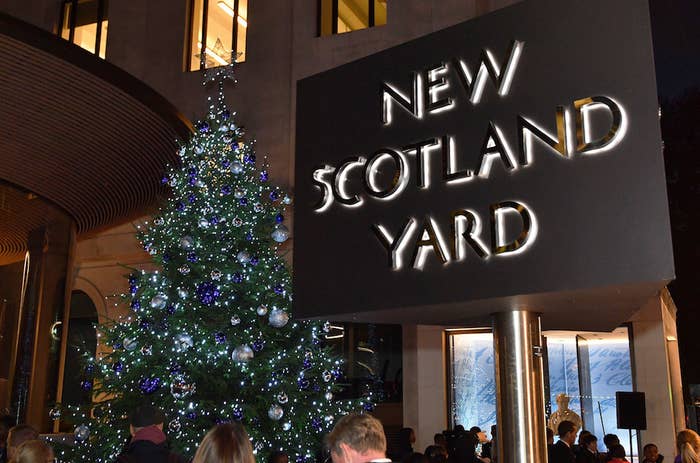
One of the most unusual crime stories of the last few years came to a close in September when the Metropolitan Police Service closed its investigation into the deaths of more than 400 cats and other animals across the UK.
Operation Takahe was set up to investigate some 400 reports of animal deaths from worried pet owners, firstly in Croydon, south London, and then later much further afield. The "Croydon Cat Killer" became a media sensation.
But to the dismay of some animal rights activists and pet owners, who remain convinced the deaths are the work of a person or persons now referred to as the "UK animal killer", the Met finally concluded that the deaths were in fact mostly road traffic accidents and that the bodies had then been mutilated by foxes. Some cat lovers had speculated that the investigation was only dropped because of a lack of police resources.
But now, after a protracted battle using the Freedom of Information Act (FOIA), BuzzFeed News can reveal that police dedicated vast resources to the investigation.
In response to questions BuzzFeed News first posed in September, the Met revealed this week:
• It dedicated an estimated 2,250 police hours to Operation Takahe from 2016 to 2018, equivalent to more than £130,000 of police resources, according to National Police Chiefs Council figures.
• The Met spent £6,000 on pet postmortem examinations in 2016 alone.
• An extra £800 was spent on re-examining some of these postmortems in 2018. The Met's response indicates this charge was for the lab only — the pathologist appears to have donated their time.
• Microscopic hair-testing in 2018 cost the force £1,300.
• The investigation had a full-time team of four officers based in Croydon from January 2018, including two detective constables, available part-time, and two police constables, who left the investigation in March. There were reportedly as many as 15 officers working on this case at one time.
The Met only divulged this information after it missed the initial FOIA deadline of 20 working days and after BuzzFeed News referred the case to the Information Commissioner's Office, which then wrote to the force compelling it to answer.
The force said it couldn't give an accurate account of the operation's cost and the level of resources allocated to it because "records that would allow the exact time that officers/members have spent on the investigation are not held by the MPS."
Police forces usually work out the cost of an investigation by calculating officers' pay while conducting inquiries and any other expenses, which are logged using a specific cost code. However, for some reason Operation Takahe did not have a cost code and therefore the relevant data doesn't exist.
Peter Kirkham, a former detective chief inspector with the Met, said the number of hours dedicated to the case was "as much as you'd put on a linked series of armed robberies".
He told BuzzFeed News: "It's not at the same level as a murder inquiry — with that, in a couple of days you've done that many [hours] just doing the initial scene and house-to-house inquiries.
"In the big scheme of things it's not massive, but when you look at the individual inquiries it's way more than any single robbery or burglary would get. It's the sort of thing you'd expect maybe with these moped gangs.
"They were forced into it by the public groundswell of opinion — people with cats know how to moan to their MPs and the media. It's a significant investment, but if you're going to do it, you might as well do it properly. It sounds like they've done a decent job."
Kirkham added that without the investigation, the police wouldn't have been able to give answers to the many families who had contacted them worried that their pet had been killed by a mysterious cat killer.

Depending on your perspective, the Croydon Cat Killer is either an evil, sadistic menace to society, responsible for more than 400 animal deaths in the last three years, or a baseless conspiracy theory developed on social media by pet owners mistakenly joining the wrong dots.
South Norwood Animal Rescue and Liberty (SNARL), an obscure organisation run by a couple who take in and look after cats, was central to the spreading of information about the supposed cat killer, through its Facebook page and via appearances in the local and national news media.
Despite the fact that the extensive — and expensive — forensic testing found no traces of human DNA, Boudicca Rising, one of SNARL's two cofounders, still believes a killer, or perhaps several killers, is out there.
She told BuzzFeed News: "At the end of the day the police came to the conclusion that we didn't agree with, because we have very clear indication, in some of these cases, of human involvement.
"Body parts don't get returned six months later via foxes. Unless you've got some really, really clever foxes who are able to mimic human behaviour with freezers and storages lockups.
"So we made a decision to continue the investigation. From that perspective it's irrelevant to us how much the police spent. That's up to them, that's their business."
It appears the group has modified its stance from the killings being the work of a single killer to that of several people.
"We've always kept an open mind about whether it's the work of a single person or we've got a group, or a number of individuals, all operating independently. What we still think though is that it looks like it's one person," Rising said.
Rising and other agencies continue to investigate the 400-plus cat deaths, a process she says is at a key stage.
